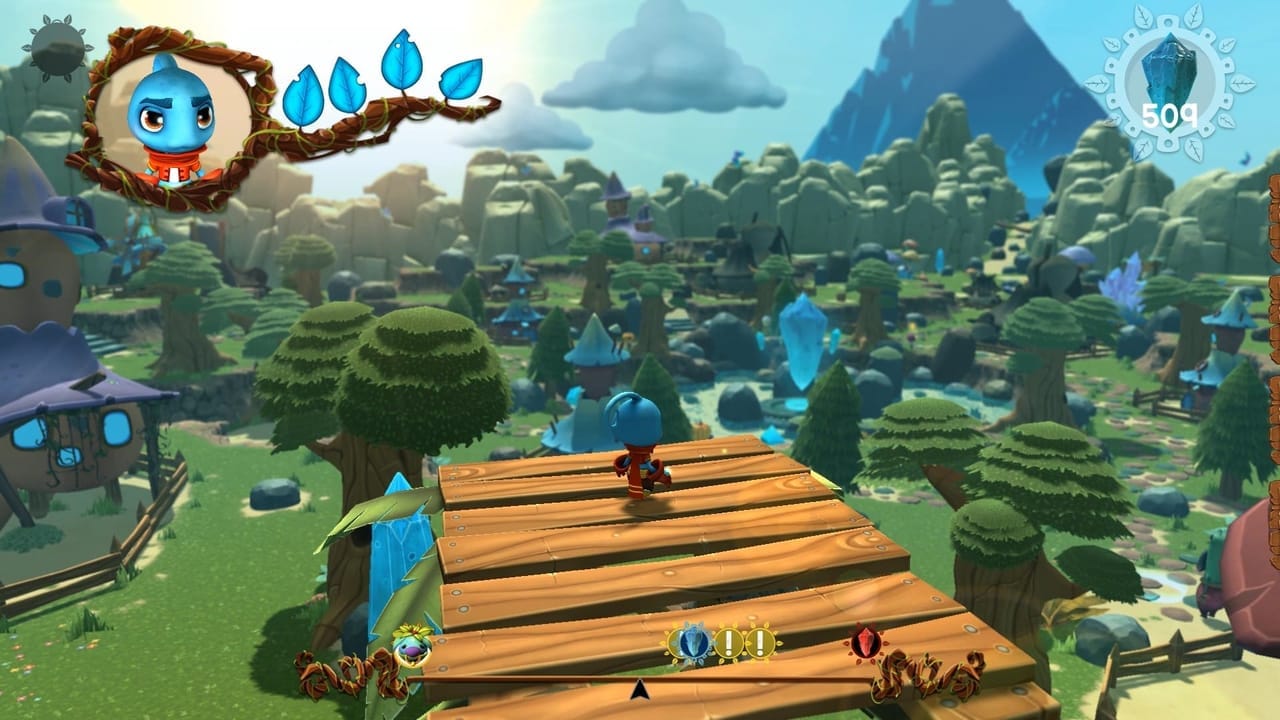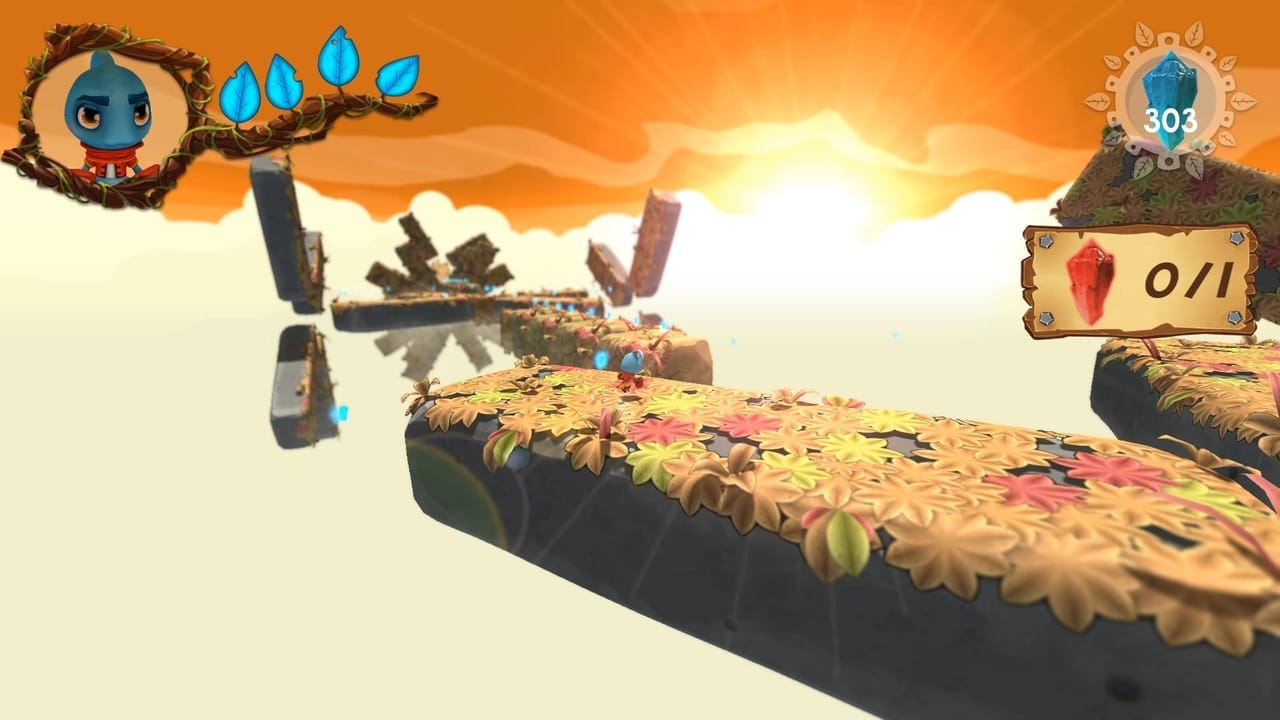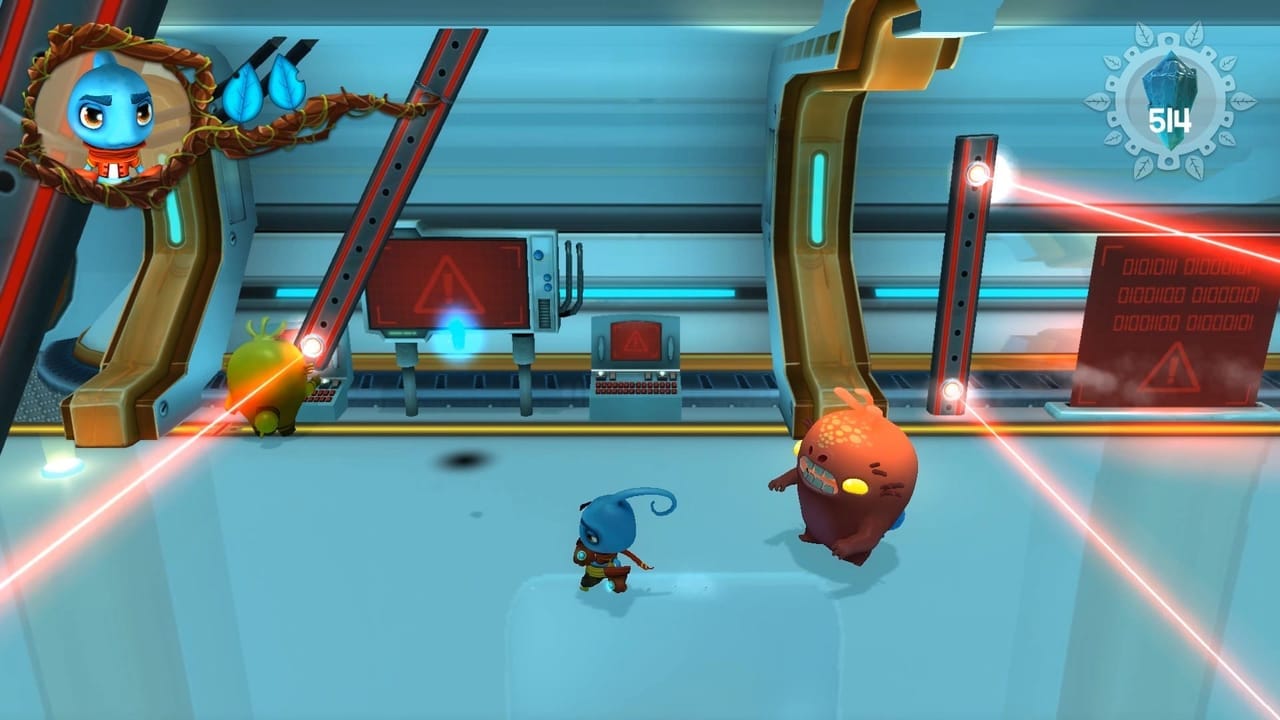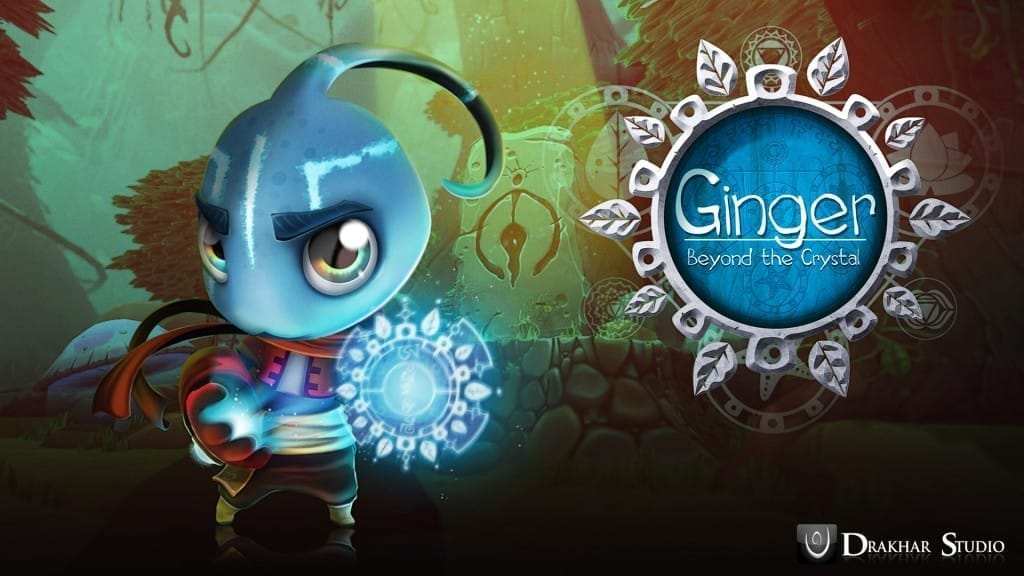Ginger: Beyond the Crystal tries to do a lot. Most importantly, it tries to pay homage to classic 3D adventure-platformers like Ratchet and Clank and Super Mario 64, but without having to sacrifice modern game mechanics and features. The result is a perfect example of a developer wanting to have their cake and eat it too. Ginger: Beyond the Crystal is a game design mess that tries hard to be everything and in the process accomplishes virtually nothing of note.

In Ginger: Beyond the Crystal, you play as someone named Ginger, surprise, surprise. Ginger is tasked with bringing peace and order back to his home after the magical crystals surrounding it are turned red/evil and monsters attack the area around them. The narrative and writing are mediocre at best, and you can tell that a lot of the game's writing flaws can be attributed to rough translations. However, these shortcoming are still forgivable. The story moves the gameplay along just fine, so I can't fault it for that.
The main focus of Ginger: Beyond the Crystal is gameplay, and this is where things get incredibly murky. See, there are gameplay elements that absolutely work in the game's favor. Or, at least they would if they weren't paired up with so many other lackluster elements.
The Achilles' heel is its insistence on layering gameplay elements over one another until the game simply cannot take any more. The game's genre is constantly flip-flopping. One minute it's a 3D platformer, the next it's an adventure game. Go back to the main hub world and the game has you restoring broken-down homes as if it were a base-building game. Meanwhile, the hub worlds themselves are littered with collectibles and side missions for you to complete, making it feel like a truncated open-world game.
The result is a game that ends feeling like it's actually 10 different games mashed into one. It lacks any central theme binding its many different levels—a game without a true identity.
There are two main types of levels that you can jump into in Ginger: Beyond the Crystal. First, there's the pure 3D platforming levels. These levels make up the majority of the game's best moments. They are the points where the game actually manages to be fun for a change. If the rest of the game was like these levels, I could probably recommend it. The levels are both well-designed and fun to traverse thanks to a healthy dose of challenge that never comes across as frustrating. Everything always seems within reach and doable from the player's perspective, it's just a matter of careful planning and execution.
The objective is simple: collect all the red crystals in the level and you win. However, it's this simplicity that really sets these levels apart from the rest of the game.

Unfortunately, these 3D platforming levels take up very little time in the grand scheme of things. Instead, you'll spend the majority of your time with Ginger: Beyond the Crystal playing through the game's 15 action-adventure levels.
Now, I say action-adventure because although much of what you'll be doing in these levels is exploring and puzzle-solving, there are plenty of enemies to fight along the way. Unfortunately, the enemy designs are uninspired at best. For example, one of the most common enemies I faced were these jumping frogs that simply hop towards you once you get close to them—no special attacks, just jumping. This was the attack pattern of most of the enemies in Ginger: Beyond the Crystal, making them feel tacked on just to add to the game's run-time.
The "combat" controls in Ginger: Beyond the Crystal are well below the standards of a game released in 2016. Half of the time, when I go in to attack an enemy, I have no idea if I'm going to hit them or they're going to hit me. There seems to be no rhyme or reason to any of it.
And on top of this, camera controls do little to help the situation. When inside one of the adventure levels, you have no control over the camera, and when outside of these levels, the camera controls are inverted and there is no option to change them.
Anyways, as for the levels themselves, they really are hit-or-miss. Well, the phrase "hit-or-miss" implies that they have just as much of a chance of being good as they do being bad. The fact of the matter is that most of these levels were boring or flat-out poorly designed, and only a few actually offered an experience that was genuinely fun. It doesn't help that the more enjoyable levels weren't playable until close to the end of the game. If I didn't have to finish this game for the review, I would have stopped playing long before I even got close to the end.
Like I mentioned earlier, there is no central theme that really binds these levels together. They all seem like they were developed without the others in mind. One level might seem like something straight out of a Luigi's Mansion game, while the next is a boring carnival-themed level where Ginger runs around completing mini-games. It's difficult to explain why some levels were so much worse than others mostly because the levels were so different from one another. It's clear the developers were trying to take inspiration from Super Mario 64, but Mario 64 felt like a cohesive game. While it's levels were different, they all felt connected in some way, and this is a feeling that Ginger: Beyond the Crystal fails to capture.

On top of the game's often poor level design, many of Ginger's abilities are bland too. Every now and again he receives a new costume that gives him unique abilities like the ability to plant bombs or breath fire, but they never live up to their full potential. I only ever used most of them when a puzzle called for them specifically. Couple this with the fact that, by the end of the game, you have so many costumes that it becomes tedious to switch between them regularly and you have yourself another failed gameplay element. That seems to be the theme of Ginger: Beyond the Crystal.
Before I wrap up this review, I can't in good conscience leave you without mentioning the game's numerous mechanical and graphical hiccups. The frame rate is downright atrocious at times, and loading screens can seemingly take forever. Oh, and the game crashed once, too. Were these hiccups overly damaging to the overall experience? Not necessarily for me, but they weren't very pleasant, either.
Ginger: Beyond the Crystal is the video game equivalent of Frankenstein's monster. It's an amalgamation of different parts—in this case game genres and gameplay mechanics—with the hopes of creating something new and special. Instead, what we got was void of everything that makes games fun and enjoyable. The pros of this game are few and far between, and as a result, the game is little more than a time-waster that will forever stand in the shadows of the classics it tries to emulate and the modern successes it attempts to model itself after.
TechRaptor was given Ginger: Beyond the Crystal for the purposes of review. It was reviewed on PlayStation 4.
Review Summary
Ginger: Beyond the Crystal is little more than a time-waster that will forever stand in the shadows of the classics it tries to emulate and the modern successes it attempts to model itself after.
(Review Policy)Pros
- Fun 3D platforming levels
Cons
- Graphical hiccups
- Master of none
- Boring adventure levels
Have a tip, or want to point out something we missed? Leave a Comment or e-mail us at tips@techraptor.net













